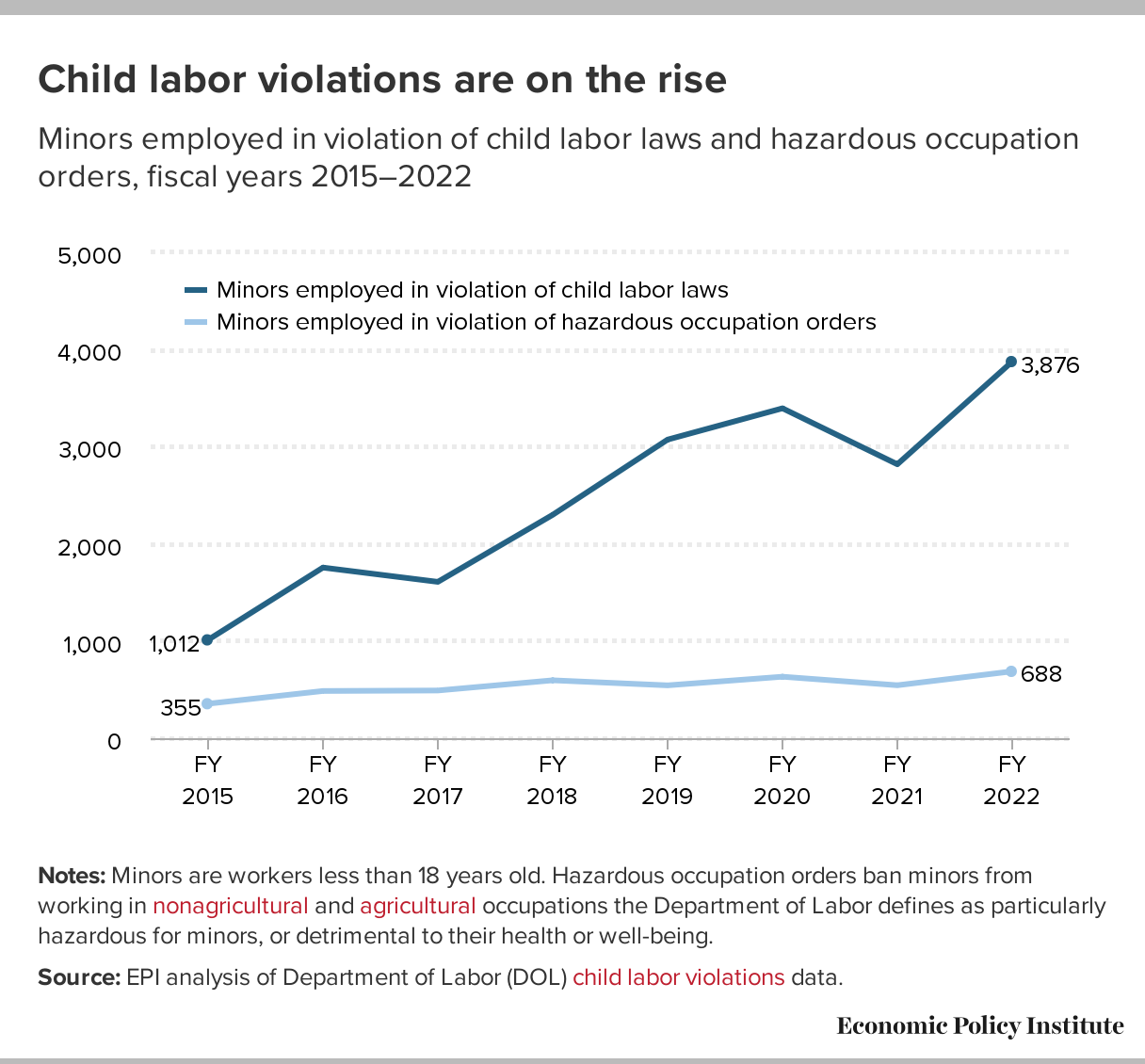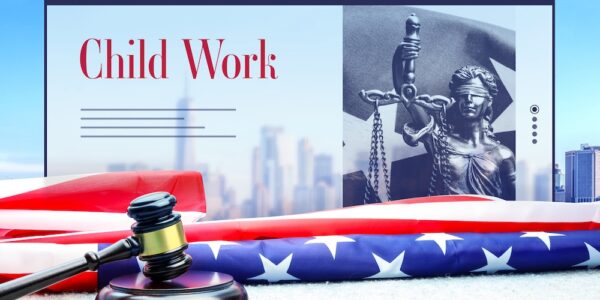We were sorry to report that child labor has become a problem in the United States, but things are getting worse before they get better. We hope they will get better, and one good sign is the fact that the Department of Labor has establish4ed a task force on child labor to nip the problem in the bud.
What happened?
Between 2015 and 2022, child labor complaints increased by 69%. The number of children illegally employed increased by 37%. The number of children working in dangerous conditions increased by 94%.
One example is in the meatpacking industry, where over 100 kids between 13 and 17 were found to be working illegally in hazardous jobs. They were cleaning meatpacking plants on night shifts, cleaning razor-sharp cutting tools with caustic chemicals. Several were injured before the pattern was discovered. Auto manufacturers hired children as young as 14, many of them unaccompanied minors from other countries.
In both these cases, staffing agencies appeared to have been trafficking the children, but the large corporate employers did not take reasonable precautions to avoid the problem.

What’s the solution?
An Interagency Task Force to Combat Child Labor Exploitation is taking action against this tragic trend. From their founding, they have rooted out nearly 5,000 illegally employed children and assessed penalties amounting to $6.6 million. This should demonstrate that they are serious about prosecuting those who break the law.
The DOL is also investing heavily in training and awareness. Along with the Department of Labor, the departments of Defense, Energy, Interior, Housing and Urban Development, Transportation and Treasury, and with the U.S. Small Business Administration, Corporation for National and Community Service, Equal Employment Opportunity Commission, Office of the U.S. Trade Representative, and the U.S. Agency for International Development are all working two teach employers how to identify, prevent and report child labor exploitation. The various agencies are also working on materials including multilingual videos to help kids and parents understand the laws and their legal rights.
These measures focus on enforcing existing laws. Unfortunately, ten states have recently passed laws weakening protection against child labor. Arkansas is allowing children to work at age 14. Iowa is allowing 16 year olds to serve liquor. Ohio allows 14 year olds to work until 9:00 p.m. on school nights. Federal law offers lesser protections for children working in agriculture as well as lower minimum wage standards for minors. When the laws do not protect young people, enforcing the laws can only do so much.
I industry groups that see increased child labor or relaxed laws as solutions for the current labor shortage should look to automation instead.
